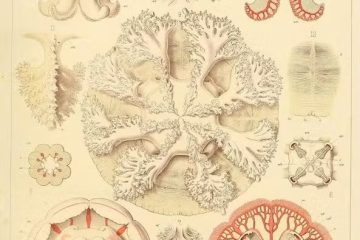Here’s to Astrology!

Astrology is a fascinating and controversial topic. Many people in Europe and North America share the idea that astrology is some superstitious gibberish (perhaps with the exception of millennials who seem to love astrology and create a new boom in online astrology). And negative opinions are stronger, the less people actually know about astrology.
For more than 25 years, I’ve studied the history of astrology, its links to philosophy, other sciences, and religion, and how these links have changed since the birth of astrology in the ancient world, some 5000 years ago (see also Klemens Ludwig’s reflections on astrology’s role in art history on this blog). I’m interested in how astrology retained its status as an accepted system of knowledge—an art in the classical sense—until the modern “enlightened sciences” created the binary of astronomy as an accepted science over against astrology as an “occult philosophy” that did not live up to the new scientific standards. But it was only in the twentieth century that astrology became the nemesis of “exact science” and astronomy—astrology as the laughing stock of “modernity.” If people today take astrology seriously as a system of knowledge, they are regularly ridiculed and ostracized, both by the general public and the academic community (repeatedly, my research on astrology worked against me in applications for professorships).
Since I wanted to understand astrology as best as I could, I also learned to practice it. If you’ve seen hundreds of birth charts, worked yourself through dozens of interpretative tools, and experienced the encounter of astrologer and client, you’ll refrain from simple answers to questions such as, “Does it work?” That detailed experience might perhaps allow you to develop a respect for the human engagement with cosmic rhythms and patterns of observation that have shaped this oldest of the arts in Asian and European cultures.
Astrology is a hermeneutical art. It is based on the assumption that we are part of a cosmic entanglement of powers and dynamic structures that are reflected in the movements of the stars (not caused by the stars, as many people think). The calculating aspect of astrology determines the positions of the stars and works with the best algorithms available, calculating what professionals call transits, directions, progressions, synastries, composites, and much more. These strive for exact and objective data. Yet the hermeneutical aspect of astrology resists precise determination. Astrological meaning (what Geoffrey Cornelius calls the “moment of astrology”) emerges from the encounter of an astrologer, her or his client, and the birth chart (or horoscope), which is a graphical rendering of a dynamic configuration of energies and is itself an agent in this setting. Finally, as part of cosmic structures, the moment and place of the “reading” also influence the formation of meaning.
As an astrologer, you can predict combinations of energies (that are reflected in the planetary movements). You can reconstruct past and present events in your client’s life to learn from them in your interpretation—what happened in the client’s life the last time this energy was activated, and how can we extrapolate present and future events from this?
Astrology has always been empirical—from Babylonian “astronomical diaries” that were kept for 700 years (“The activities of the Chaldaeans are probably the longest research program ever”), to Renaissance astrologers who collected birth charts to test and improve their predictions, to contemporary astrologers who struggle to improve their art by learning from successes and failures, just as “modern” science does.
The empirical basis of astrology has its limits, though. As an astrologer, you cannot predict or reconstruct exactly how astrological events will appear in the daily life of your client. All you can say to your client, for instance, is that “there is something revolutionary going on in your love relationship next year.” Whether this will be a marriage, a break-up, or just a serious challenge remains unknown. This vagueness can be highly frustrating for both astrologers and clients.
But it also may be liberating.
Hermeneutic art is ambiguous, playful, and open to amazement. In its complexity and its dependence on the specific concatenation of forces at the moment of a horoscope reading, it is neither repeatable nor quantifiable. That is a major reason why social-scientific testing usually comes to negative results when applied to astrology.
Delegating the mysterious, the ambiguous, and the non-reductionist to the realm of the non-scientific—one of the major stepping-stones to become a “modern European”—had an impact on astrology in the twentieth century, too. Astrologers embraced the new discipline of professional psychology, which strove to be accepted as a “scientific discipline” by eliminating vague concepts such as “soul” or “cosmos” (a soul-loss I trace in my new book). But in doing so, astrologers also—sometimes unwillingly—subscribed to the idea that ambiguity and polysemy have no place in a scientific system of knowledge. Practicing astrology as a direct experience of understanding, not filtered through the membrane of psychological rationalization, became an embarrassing undertaking, even among professional astrologers.
With the rise of new approaches to the complexity of mind and matter, which address the relationality of things and the agency of human and nonhuman persons in the creation of holistic knowledge, it is possible to see astrology in a new light. What Thomas Ring (1892–1983), one of the greatest astrologers of the twentieth century, envisioned in his “revised astrology” 60 years ago has become a scientifically worthwhile option again today. Astrological hermeneutics accumulates knowledge about humans and the cosmos in their intricate relationality, as encounters of beings and energies that are always changing and new, despite their recognizable patterns. In Roy Willis’ and Patrick Curry’s formulation, it’s about “minding the heavens.”
Seen in this way, astrology is not the opposite or Other of science. It is a reminder of how science could look if it took the agency of the more-than-human world seriously. By acknowledging the fragility of human knowledge, it is a contrapuntal exercise in humility and ambiguity.
Here’s to astrology as the thorn in the sides of science and modernity!
#
Kocku von Stuckrad is one of the co-founders and co-directors of Counterpoint: Navigating Knowledge. As a Professor of Religious Studies at the University of Groningen (Netherlands), he works on the cultural history of religion, science, and philosophy in Europe. His (German) History of Astrology has been translated into Italian, Spanish, and Portuguese. His new (German) book is The Soul in the Twentieth Century: A Cultural History.
Counterpoint blogs may be reprinted with the following acknowledgement: “This article was published by Counterpoint Navigating Knowledge on 28 August 2019.”
The views and opinions expressed on this website, in its publications, and in comments made in response to the site and publications are those of the author(s) and do not necessarily reflect the views and opinions of Counterpoint: Navigating Knowledge, its founders, its staff, or any agent or institution affiliated with it, nor those of the institution(s) with which the author is affiliated. Counterpoint exists to promote vigorous debate within and across knowledge systems and therefore publishes a wide variety of views and opinions in the interests of open conversation and dialogue.



